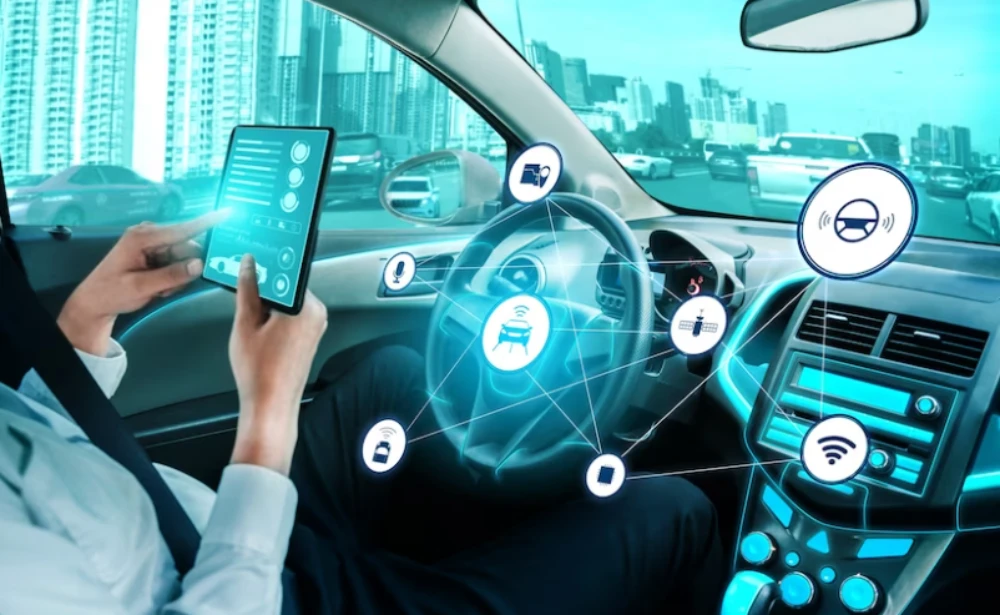Driving into the Future: Exploring the Wonders of Connected Vehicle Technologies
Category: Smart Road Technologies
1. What are Connected Vehicle Technologies?
- Picture this: your car is not just a standalone entity but part of a network where vehicles communicate with each other and with the infrastructure around them. Connected Vehicle Technologies make this possible, turning our regular rides into smart, interconnected companions on the road.
2. The Heart of Connection: V2V and V2I Communication
- Connected vehicles have a special language – Vehicle-to-Vehicle (V2V) and Vehicle-to-Infrastructure (V2I) communication. V2V allows cars to share information with nearby vehicles, such as speed, location, and sudden stops. V2I lets them talk to traffic lights, road signs, and even the roads themselves.
3. Smarter and Safer Driving: Intelligent Traffic Management
- Imagine if your car knew what’s around the next corner or if there’s an obstacle up ahead. Connected vehicles make this a reality. Through real-time data exchange, they contribute to Intelligent Traffic Management, helping us avoid traffic jams, accidents, and unexpected roadblocks.
4. Reducing the Guesswork: Predictive Maintenance
- Connected Vehicle Technologies don’t just stop at communication; they also help predict when your car needs some TLC. By constantly monitoring its health, these technologies can alert you and your mechanic about potential issues before they become big problems, saving you time and money.
5. The Human Touch: Enhancing the Driving Experience
- Connected vehicles make driving more enjoyable and stress-free. With features like advanced navigation systems, real-time weather updates, and even entertainment options, your car becomes a companion that understands and caters to your needs.
Conclusion:
In conclusion, As we steer into the future, Connected Vehicle Technologies are transforming the way we travel. No longer just modes of transportation, our cars are becoming smart, communicative partners in our daily journeys. From making our roads safer to enhancing our driving experience, these technologies are driving us into a new era of connected and intelligent transportation. As we embrace this wave of innovation, the road ahead promises not just destinations but exciting, technologically enriched adventures.
CASE STUDY
Case Study 1: CitySmart’s Intelligent Traffic Management with Connected Vehicles
Introduction:
- CitySmart, a forward-thinking urban center, faced persistent traffic congestion and safety concerns. They decided to implement a comprehensive Connected Vehicle Technologies system to address these challenges.
Implementation:
V2V Communication for Traffic Flow:
- – CitySmart integrated V2V communication among vehicles to share real-time information about traffic conditions.
- – Connected vehicles exchanged data about their speed, location, and route plans, enabling dynamic traffic flow adjustments.
V2I Communication for Smart Traffic Lights:
- – Traffic lights were equipped with V2I communication capabilities, allowing them to interact with connected vehicles.
- – Smart traffic lights adjusted timings based on incoming data, creating smoother traffic flow and reducing unnecessary stops.
Predictive Maintenance Alerts:
- – Connected vehicles transmitted diagnostic data to a central system for predictive maintenance analysis.
- – Drivers received alerts about potential issues, and mechanics were informed in advance, reducing the likelihood of breakdowns.
Outcome:
- CitySmart experienced a notable reduction in traffic congestion, leading to shorter commute times.
- The integration of predictive maintenance contributed to a decrease in roadside breakdowns, enhancing overall road safety..
Case Study 2: SmartDrive Corporation’s Fleet Efficiency with Connected Vehicles
Introduction:
- SmartDrive Corporation, a logistics company managing a large fleet, sought ways to improve operational efficiency, reduce fuel consumption, and enhance overall fleet safety. They turned to Connected Vehicle Technologies for a solution.
Implementation:
Real-time Fleet Monitoring with V2V Communication:
- – The company equipped its entire fleet with Connected Vehicle Technologies to enable V2V communication.
- – Vehicles transmitted real-time data about their locations, speeds, and fuel consumption, creating a comprehensive fleet monitoring system.
Fuel Efficiency Optimization:
- – SmartDrive used the collected data to optimize routes, reduce idle times, and enhance fuel efficiency.
- – Drivers received real-time feedback on their driving habits, encouraging fuel-conscious behavior.
Safety Enhancements through V2I Communication:
- – The fleet’s vehicles were equipped with V2I communication to interact with traffic signals and road infrastructure.
- – The system provided alerts about upcoming traffic signals, enabling drivers to adjust speeds for smoother traffic flow.
Outcome:
- SmartDrive Corporation achieved a significant reduction in fuel costs and an increase in overall fleet efficiency.
- The implementation of Connected Vehicle Technologies contributed to a safer driving environment, with fewer instances of harsh braking and acceleration.

